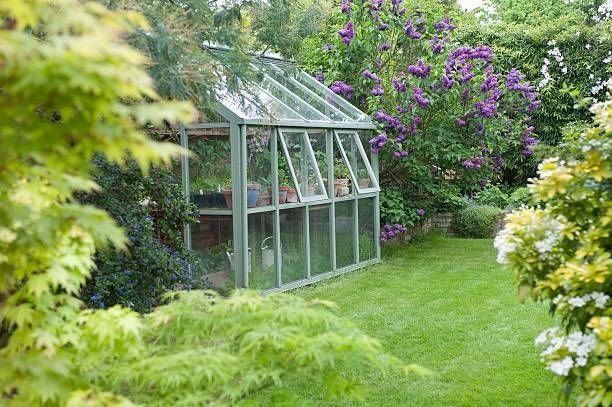Structure Dreams, Growing Green: Monarch Greenhouse Builder Utah at Your Service
Wiki Article
The Future of Greenhouses: Developments in Sustainable Farming
Are you curious concerning the future of greenhouses and how they are reinventing sustainable farming? Look no more! In this short article, we will certainly explore the amazing innovations that are leading the way for a greener and more efficient farming sector. From advanced environment control systems to upright farming techniques, water-efficient irrigation methods, renewable resource integration, and wise data analytics, these innovations are transforming the way we grow our food. Prepare to discover the future of sustainable agriculture in greenhouses!Advanced Environment Control Solution
To attain ideal growing conditions, you can depend on the developments in greenhouses with sophisticated environment control systems. These systems have actually changed the means we grow crops, offering a controlled atmosphere that contributes to plant growth. With these ingenious systems, you can now manipulate temperature, humidity, light degrees, and also carbon dioxide focus to produce the ideal conditions for your plants to thrive.One of the vital features of these advanced environment control systems is their capability to regulate temperature. By using sensing units and automated controls, the greenhouse can change the temperature based on the specific demands of the plants. This makes certain that they are never exposed to extreme warm or cool, which can be destructive to their growth.
Moisture control is an additional vital element of these systems. By maintaining the ideal moisture levels, you can prevent concerns such as mold and mildew, mold, and illness from affecting your plants. These systems can also control the amount of light that gets to the plants, making sure that they get the optimum amount for photosynthesis.
In addition, progressed environment control systems can even control CO2 concentrations. By raising the levels of carbon dioxide in the greenhouse, you can enhance plant development and performance. This is especially beneficial in locations with reduced all-natural carbon dioxide levels.
Vertical Farming Strategies
One important vertical farming method is utilizing stacked expanding systems. Piled expanding systems are commonly utilized in urban areas where area is restricted.One preferred approach is referred to as upright hydroponics, where plants are expanded in nutrient-rich water without dirt. This strategy is very efficient as it lowers water usage by up to 90% compared to traditional farming methods. In addition, since the plants are grown indoors, they are protected from diseases and insects, decreasing the demand for pesticides.
Another technique is aeroponics, which includes putting on hold the plant roots in a mist or air environment. This method allows for optimal nutrient absorption and oxygenation, resulting in faster development and greater yields. Aeroponics also uses much less water than traditional farming and can be implemented in upright systems, making it a prominent option for upright farming.
Water-efficient Irrigation Approaches
When it comes to executing water-efficient irrigation techniques in sustainable farming,Taking full advantage of water conservation is essential. With global water deficiency becoming a pushing problem, it is crucial to develop cutting-edge methods that optimize water usage in greenhouse procedures.One appealing method is drip watering, which delivers water straight to the plant origins, lessening waste and evaporation. By making use of a network of tubes with tiny emitters, water is used slowly and precisely, ensuring that plants get the required moisture without excess drainage.
Another effective strategy is using dirt moisture sensors. These tools gauge the wetness web content in the dirt and provide real-time data to farmers. By keeping an eye on the soil's dampness degrees, farmers can precisely establish when and Source just how much water to use, avoiding over-irrigation.
In addition, the implementation of rainwater harvesting systems is gaining appeal in greenhouse farming. Gathering rain from roofs and storing it in tanks allows farmers to utilize this natural source for watering objectives, lowering dependence on traditional water resources.
Lastly, the adoption of automated irrigation systems can significantly boost water efficiency. These systems make use of sensors to identify soil dampness levels and climate conditions, changing irrigation routines accordingly. By enhancing water use based on actual plant demands, these systems can decrease water waste and promote lasting farming techniques.
Renewable Power Assimilation
Eco-friendly power integration in greenhouses provides numerous benefits, including lowered running prices and reduced dependence on non-renewable energy resources. The produced power can then be made use of to run numerous operations within the greenhouse, such as home heating, illumination, and air flow systems. These generators harness wind power and convert it right into power, which can be made use of to supplement the energy needs of the greenhouse.Smart Data Analytics and Automation
To enhance the efficiency of your greenhouse procedures and optimize source application, take into consideration executing smart information analytics and automation. Smart information analytics entails collecting and analyzing data from different sensing units and tools within your greenhouse.
This can include automating the control of illumination, ventilation, irrigation systems, and nutrient shipment. By automating these procedures, you can guarantee that your plants get the ideal problems and nutrients at the best time, without the demand for consistent hand-operated treatment.
Furthermore, wise information analytics and automation can collaborate synergistically. The data collected by sensors can be used to inform automated systems, enabling them to make real-time changes based on the current conditions. This integration of data analytics and automation can bring about a lot more precise and reliable source allotment, eventually causing higher returns and far better crop high quality.
Verdict
In final thought, the future of greenhouses in lasting farming looks encouraging. With innovative environment control systems, upright farming methods, water-efficient watering techniques, and sustainable energy assimilation, greenhouses are becoming much more eco pleasant and efficient.
By enhancing water use based on real plant needs, these systems can minimize water waste and promote lasting farming methods.

Report this wiki page